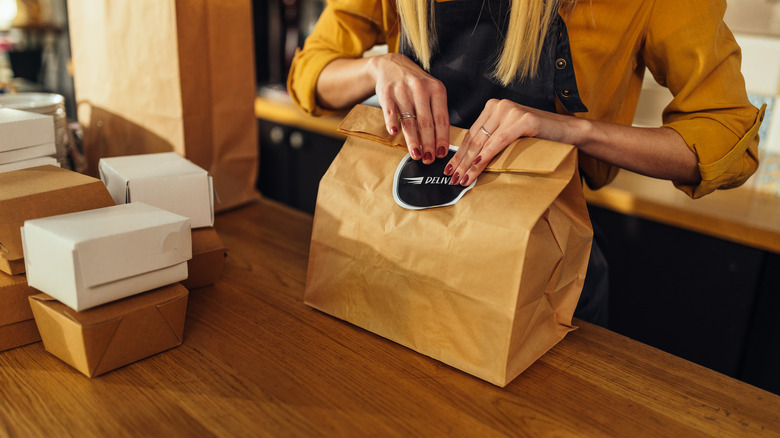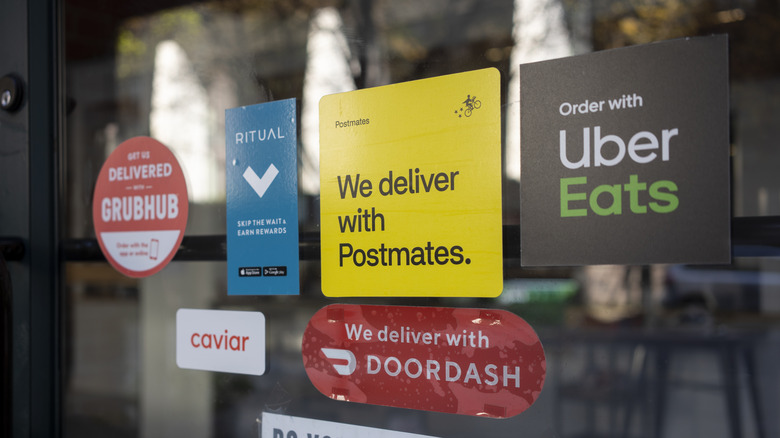The Food Delivery App That Costs You And The Restaurant The Most To Use
Although ordering food delivery through a third-party app offers the convenience of countless menus all in the same place, it comes with a price –- and a hefty one at that. If you've ordered through the likes of Grubhub, Doordash, or Uber Eats, you know the fees for service and delivery can add up fast.
Of course, this begs the question of which app is the cheapest to use, and conversely, which is the most expensive? According to an experiment conducted by The Washington Post, Grubhub is generally a bit pricier, with an order of $22 in food snowballing into a customer total of about $38. A little over $12 goes to the restaurant, about $9 goes to the app itself, and about $7 goes to the delivery driver.
In comparison, going to the restaurant yourself and picking up takeout costs about $22 total, with just about all that money going straight into the restaurant's pocket. And if paying $16 more for the same food isn't bad enough, The New York Times says some apps charge as much as 91% more than you would pay ordering directly through the very same restaurants.
What do third-party food delivery apps mean for the future?
As previously mentioned, for food delivery services to work, every level of the operation needs to profit. The restaurant making the food needs to make money, the app you're using needs to make money, and the drivers delivering your food need to make money. After they've all gotten their slice of the pie, you're left paying double the price of your actual order.
That being said, everyone still suffers. The apps charge each restaurant a certain percentage for digital real estate, while paying drivers only by commission or a fraction of their tips. According to The Guardian, because many drivers are strategically hired as "independent contractors," apps can get away with paying them less than minimum wage. Customers, in turn, pay more for the convenience.
At the end of the day, these costs have many restaurants rightfully reconsidering whether or not they want to be featured on third-party apps. Jimmy John's, for example, pledged in 2019 that it would never team up with the likes of Grubhub, and instead stuck with delivering its own food. Likewise, some customers have decided against paying extra to use delivery apps, and as such, the golden age of food delivery apps could very well be over.

